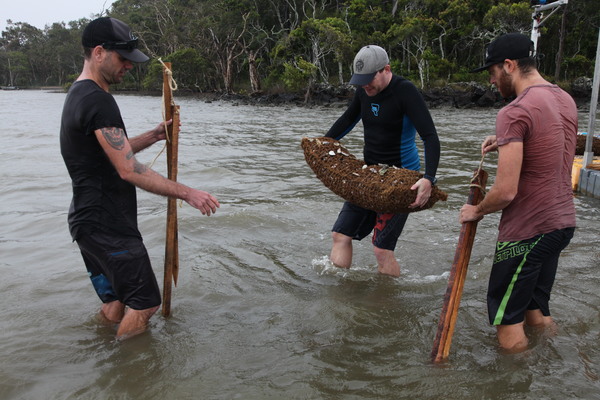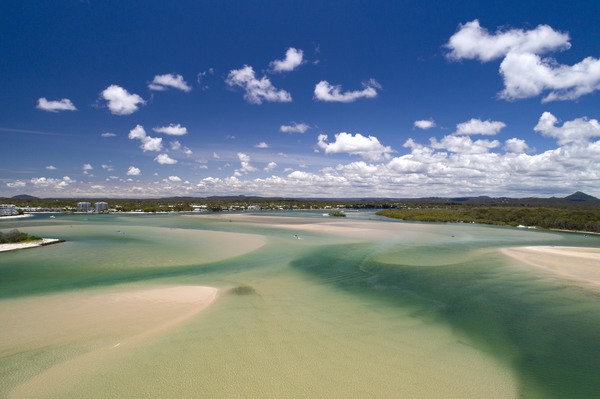“Heartbreaking” is how University of the Sunshine Coast (USC) Professor Thomas Schlacher described the discovery last Thursday that eight out of 14 artificial oyster reefs sited in the Noosa River had been irreparably damaged and have to be removed.
Also distressing for the USC research team he led was to be dropped from the research project which they were told would be managed by The Nature Conservancy.
Professor Schlacher and his team in November 2017 sited the oyster reefs, each containing nine biodegradable coconut mesh bags filled with oyster shells in the project funded by the Noosa Biosphere Reserve Foundation (NBRF), USC, Noosa Parks Association and The Thomas Foundation.
At the time his colleague marine ecologist Dr Ben Gilby said the project expected spat or oyster larvae found to be naturally occurring in the river would settle on the created reefs and grow, with the structure securing itself to the riverbed while the mesh disintegrated.
“The whole project was blood, sweat and tears with bureaucratic hurdles to jump over to get it going,” said Professor Schlacher who spent two Christmas holidays cleaning oyster shells to fill the bags.
“We learnt as a method it works but it’s sad they didn’t last longer,“ he said. “We got two to 10 times more fish around the reefs. In the first few months the reefs sucked the fish from somewhere else but over 1-2 years you get more recruitment of smaller fish and they survive longer in that habitat. We have created a nice habitat. The fish loved the oyster reefs.
“We got settlement of oyster larvae in six months. Many stayed and grew. They doubled their size in six months.“
NBRF chairman Dick Barnes described the outcome as “very good scientifically“ as it had proved the oysters could be reintroduced to the river.
“We can demonstrate they can grow, they can clump together,“ he said.
Mr Barnes said an agreement with marine authorities for the reefs to remain in the river had required three years proof they had settled and become part of the structure.
Professor Schlacher said under their permits they were required to erect signs to say where the reefs were sited and mark the site with buoys, many of which were stolen.
“It also advertised that it was a great fishing spot. It should have said consider fishing somewhere else,” he said.
“There’s no blame. It’s a gigantic learning exercise. I think many propellers cut the top of the bags so the oysters inside have spilled out.“Professor Schlacher said the USC team would be removing the damaged reefs this week and leaving the six intact ones sited in Weyba Creek and Lake Weyba which Mr Barnes said would be monitored by NBRF.
But the university team has not been consulted in the planning for the next phase of the project.
“It’s sad for us as a university,“ Professor Schlacher said. “It’s a political decision. It has to be decided between Council and The Nature Conservancy. Our role is undefined.
“We hope we can contribute something in the future. That would be right and proper. We are Australia’s leading estuarine ecology team.”
NBRF chairman Dick Barnes said the trial reefs were always a pilot research project to test the effectiveness in restoring lost habitat and remediating the Noosa waterway system.
“We are satisfied that the oyster settlement and growth recorded over the past year provides good input into future reef extensions,” he said. “However, improvements in the design and protection of the reefs will be needed to meet the conditions in the Noosa River.
“We now have sufficient information to proceed with the positioning and construction of scaled-up reefs and continuing the research program.”
Mr Barnes said NBRF would be publishing a paper on the project’s scientific research with input from USC and other people.
He said over the next year of a three-year program research on the design and location of reefs would be undertaken.








